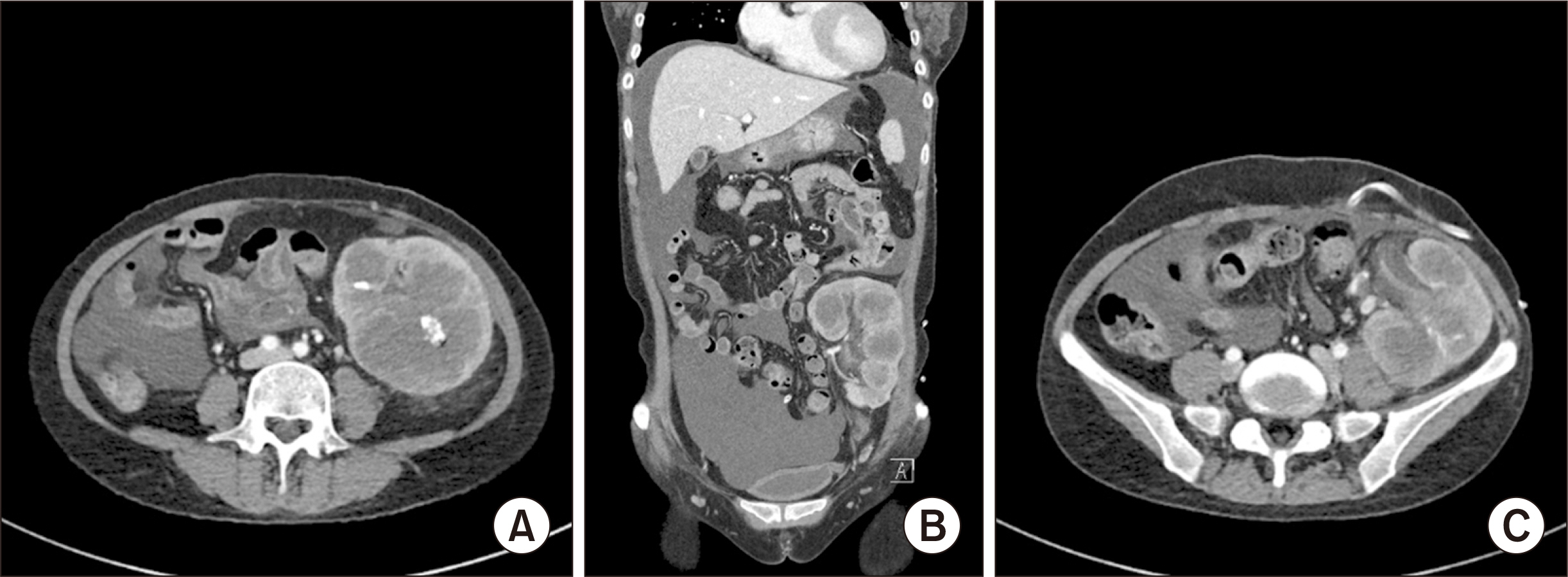Korean J Transplant.
2023 Sep;37(3):216-219. 10.4285/kjt.23.0035.
Graft lymphoma in a kidney transplant recipient: a case report
- Affiliations
-
- 1Department of Internal Medicine, Jeonbuk National University Hospital, Jeonju, Korea
- 2Biomedical Research Institute of Jeonbuk National University Hospital, Jeonbuk National University Medical School, Jeonju, Korea
- 3Research Institute of Clinical Medicine of Jeonbuk National University, Jeonju, Korea
- 4Department of Surgery, Jeonbuk National University Hospital, Jeonju, Korea
- 5Department of Pathology, Jeonbuk National University Medical School, Jeonju, Korea
- KMID: 2546502
- DOI: http://doi.org/10.4285/kjt.23.0035
Figure
Reference
-
1. Opelz G, Döhler B. 2004; Lymphomas after solid organ transplantation: a collaborative transplant study report. Am J Transplant. 4:222–30. DOI: 10.1046/j.1600-6143.2003.00325.x. PMID: 14974943.2. Francis A, Johnson DW, Teixeira-Pinto A, Craig JC, Wong G. 2018; Incidence and predictors of post-transplant lymphoproliferative disease after kidney transplantation during adulthood and childhood: a registry study. Nephrol Dial Transplant. 33:881–9. DOI: 10.1093/ndt/gfx356. PMID: 29342279.3. Park H, Kim JS, Kong JH, Kim SH, Park SW, Song SH, et al. 2016; Post-transplant lymphoproliferative disorder in transplanted kidney causing urinary tract obstruction. J Korean Soc Transplant. 30:44–9. DOI: 10.4285/jkstn.2016.30.1.44.4. Kim B, Kang M, Kim Y, Lee HS, Kim B, Lee JJ, et al. 2021; De novo cancer incidence after kidney transplantation in South Korea from 2002 to 2017. J Clin Med. 10:3530. DOI: 10.3390/jcm10163530. PMID: 34441826. PMCID: PMC8396914.5. San-Juan R, Comoli P, Caillard S, Moulin B, Hirsch HH, Meylan P. 2014; Epstein-Barr virus-related post-transplant lymphoproliferative disorder in solid organ transplant recipients. Clin Microbiol Infect. 20 Suppl 7:109–18. DOI: 10.1111/1469-0691.12534. PMID: 24475976.6. Yabu JM, Winkelmayer WC. 2011; Posttransplantation anemia: mechanisms and management. Clin J Am Soc Nephrol. 6:1794–801. DOI: 10.2215/CJN.01190211. PMID: 21734096.
- Full Text Links
- Actions
-
Cited
- CITED
-
- Close
- Share
- Similar articles
-
- A Concept Analysis of Compliance in Kidney Transplant Recipient Including Compliance with Immunosuppressive Medication
- Graft lymphoma in a kidney transplant recipient: a case report
- Impact of Graft Kidney Volume and Weight on Graft Function in Living Donor Kidney Transplantation
- Transplantation of En Bloc Pediatric Cadaver Kidneys into Adult Recipient
- Bilateral Conjunctival Mucosa-Associated Lymphoid Tissue Type Lymphoma in a Kidney Transplant Recipient



